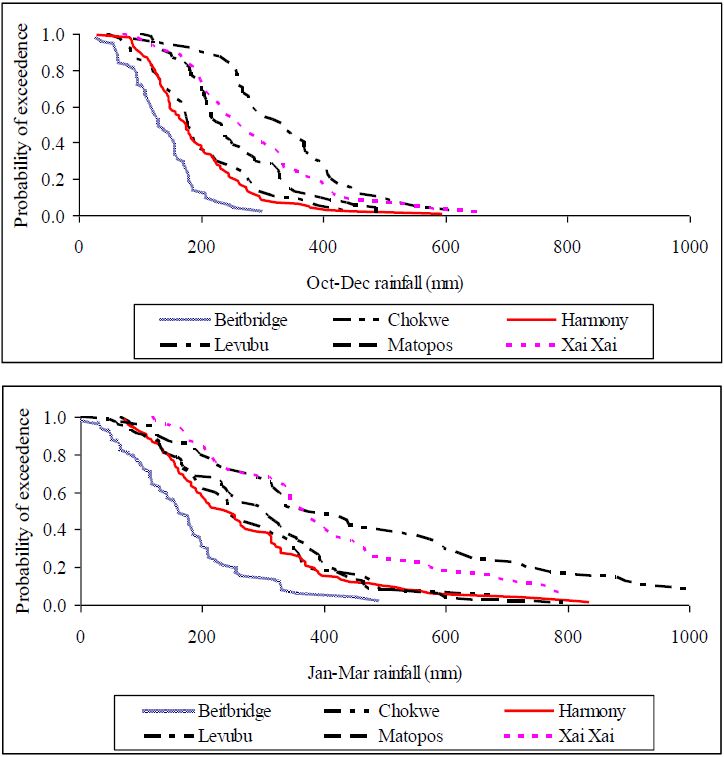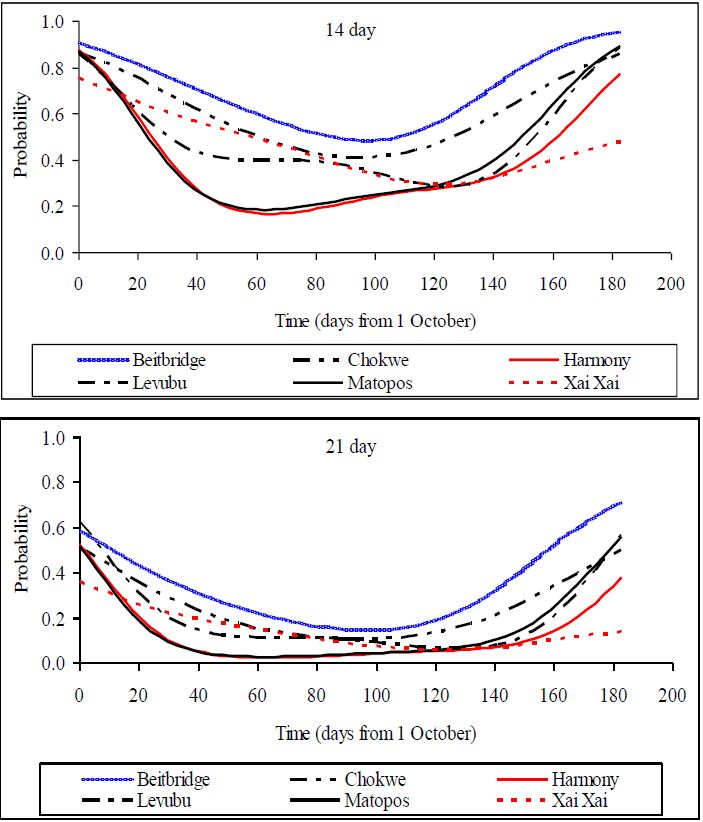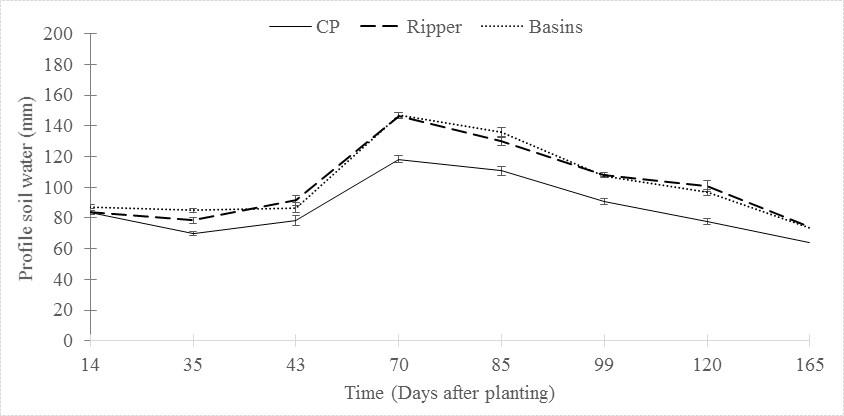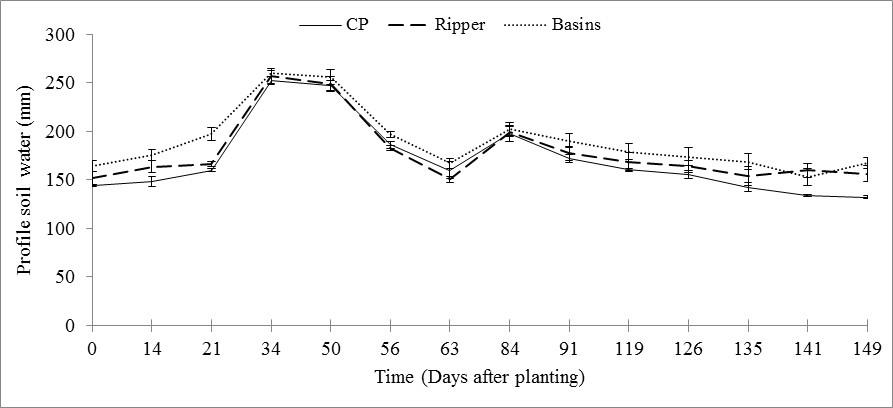|
[1]
|
Boffetta P, Nyberg F (2003) Contribution of environmental factors to cancer risk. Br Med Bull 68: 71-94. doi: 10.1093/bmp/ldg023

|
|
[2]
|
Cancer Research UK, Cancer risk in the workplace. Cancer Research UK, 2016. Available from: http://www.cancerresearchuk.org/about-cancer/causes-of-cancer/cancer-risks-in-the-workplace.
|
|
[3]
|
Ladeira C, Gomes MC, Brito M (2014) Human nutrition, DNA damage and cancer: a review, In: Mutagenesis: Exploring Novel Genes and Pathways. Wageningen: Wageningen Academic Publishers, 73-104.
|
|
[4]
|
Key JT, Schatzkin A, Willett CW, et al. (2004) Diet, nutrition and the prevention of cancer. Public Health Nutr 7: 187-200.
|
|
[5]
|
Perera FP, Weinstein IB (2000) Molecular epidemiology: recent advances and future directions. Carcinogenesis 21: 517-524. doi: 10.1093/carcin/21.3.517

|
|
[6]
|
Portier CJ, Bell DA (1998) Genetic susceptibility: significance in risk assessment. Toxicol Lett 28: 185-189.
|
|
[7]
|
Vainio H (1998) Use of biomarkers-new frontiers in occupational toxicology and epidemiology. Toxicol Lett 102-103:581-589. doi: 10.1016/S0378-4274(98)00252-5

|
|
[8]
|
Bartsch H (2000) Studies on biomarkers in cancer etiology and prevention: a summary and challenge of 20 years of interdisciplinary research. Mutat Res, Rev Mutat Res 462: 255-279. doi: 10.1016/S1383-5742(00)00008-9

|
|
[9]
|
Dusinska M, Collins AR (2008) The comet assay in human biomonitoring: gene–environment interactions. Mutagenesis 23: 191-205. doi: 10.1093/mutage/gen007

|
|
[10]
|
Perera FP (1996) Molecular epidemiology: insights into cancer susceptibility, risk assessment, and prevention. J Natl Cancer Inst 88: 496-509. doi: 10.1093/jnci/88.8.496

|
|
[11]
|
Au WW (2007) Usefulness of biomarkers in population studies: From exposure to susceptibility and to prediction of cancer. Int J Hyg Environ Health 210: 239-246. doi: 10.1016/j.ijheh.2006.11.001

|
|
[12]
|
El-Zein R, Vral A, Etzel CJ, et al. (2011) Cytokinesis-blocked micronucleus assay and cancer risk assessment. Mutagenesis 26:101-106. doi: 10.1093/mutage/geq071

|
|
[13]
|
Husgafvel-Pursiainen K (2002) Molecular biomarkers in studies on environmental cancer. J Epidemiol Community Health 56(10):730-1.
|
|
[14]
|
Perera FP (2000) Molecular epidemiology: On the path to prevention? J Natl Cancer Inst 92: 602-612. doi: 10.1093/jnci/92.8.602

|
|
[15]
|
Goldstein B, Gibson J, Henderson R, et al. (1987) Biological markers in environmental health research. Environ Health Perspect 74: 3-9.
|
|
[16]
|
Fergurson L (2008) Biomarkers as endpoints in intervention studies. In: Wild, C., Vineis, P., Garte, S. Author, Molecular Epidemiology of Chronic Diseases, West Sussex: John Wiley & Sons Ltd, 255-266.
|
|
[17]
|
Schulte P, Mazzuckelli LF (1991) Validation of biological markers for quantitative risk assessment. Environ Health Perspect 90: 239-246. doi: 10.2307/3430874

|
|
[18]
|
Davis CD, Milner JA (2007) Biomarkers for diet and cancer prevention research: potentials and challenges. Acta pharmacol Sin 28: 1262-1273. doi: 10.1111/j.1745-7254.2007.00678.x

|
|
[19]
|
US Congress (1990) Genetic monitoring and screening in the workplace. Office of Technology Assessment.
|
|
[20]
|
Barrett JC, Vainio H, Peakall D, et al. (1997) 12th meeting of the scientific group on methodologies for the safety evaluation of chemicals: susceptibility to environmental hazards. Environ Health Perspect 105: 699-737. doi: 10.1289/ehp.97105s4699

|
|
[21]
|
Ladeira C, Viegas S (2016) Human biomonitoring-An overview on biomarkers and their application in occupational and environmental health. Biomonitoring 3: 15-24.
|
|
[22]
|
Battershill JM, Burnett K, Bull S (2008) Factors affecting the incidence of genotoxicity biomarkers in peripheral blood lymphocytes: impact on design of biomonitoring studies. Mutagenesis 23: 423-437. doi: 10.1093/mutage/gen040

|
|
[23]
|
Knudsen LE, Hansen AM (2007) Biomarkers of intermediate endpoints in environmental and occupational health. Int J Hygiene Environ Health 210: 461-470. doi: 10.1016/j.ijheh.2007.01.015

|
|
[24]
|
Cavallo D, Ursini CL, Rondinone B et al. (2009) Evaluation of a suitable DNA damage biomarker for human biomonitoring of exposed workers. Environmental and Molecular Mutagenesis 50 (9):781–790.
|
|
[25]
|
Fenech M, Crott J, Turner J, et al. (1999) Necrosis, apoptosis, cytostasis and DNA damage in human lymphocytes measured simultaneously within the cytokinesis-block micronucleus assay: description of the method and results for hydrogen peroxide. Mutagenesis 14:605-612. doi: 10.1093/mutage/14.6.605

|
|
[26]
|
Majer BJ, Laky B, Knasmüller S, et al. (2001) Use of the micronucleus assay with exfoliated epithelial cells as a biomarker for monitoring individuals at elevated risk of genetic damage and in chemoprevention trials. Mutat Res 489: 147-172. doi: 10.1016/S1383-5742(01)00068-0

|
|
[27]
|
Burgaz S, Erdem O, Cakmak G, et al. (2002) Cytogenetic analysis of buccal cells from shoe-workers and pathology and anatomy laboratory workers exposed to n-hexane, toluene, methyl ethyl ketone and formaldehyde. Biomarkers 7: 151-161. doi: 10.1080/13547500110113242

|
|
[28]
|
Proia NK (2006) Smoking and smokeless tobacco-associated human buccal cell mutations and their association with oral cancer-A Review. Cancer Epidemiol Biomarkers Prev 15: 1061-1077. doi: 10.1158/1055-9965.EPI-05-0983

|
|
[29]
|
Fenech M (2007) Cytokinesis-block micronucleus cytome assay. Nat Protoc 2: 1084-1104. doi: 10.1038/nprot.2007.77

|
|
[30]
|
Holland N, Bolognesi C, Kirschvolders M, et al. (2008) The micronucleus assay in human buccal cells as a tool for biomonitoring DNA damage: The HUMN project perspective on current status and knowledge gaps. Mutat Res 659: 93-108. doi: 10.1016/j.mrrev.2008.03.007

|
|
[31]
|
Thomas P, Fenech M (2011) Buccal micronucleus cytome assay. Methods Mol Biol 682: 235-248. doi: 10.1007/978-1-60327-409-8_17

|
|
[32]
|
Cerqueira EMM, Meireles JRC (2012) The use of the micronucleus test to monitoring individuals at risk for oral cancer. In: The Research and Biology of Cancer, Hong Kong: Icon Press Ltd, 1-26.
|
|
[33]
|
Kashyap B, Reddy PS (2012) Micronuclei assay of exfoliated oral buccal cells: means to assess the nuclear abnormalities in different diseases. J Cancer Res Ther 8: 184-191. doi: 10.4103/0973-1482.98968

|
|
[34]
|
Göethel G, Brucker N, Moro AM, et al. (2014) Evaluation of genotoxicity in workers exposed to benzene and atmospheric pollutants. Mutat Res Genet Toxicol Environ Mutagen 770: 61-65. doi: 10.1016/j.mrgentox.2014.05.008

|
|
[35]
|
Fenech M (1997) The advantages and disadvantages of the cytokinesis-block micronucleus method. Mutat Res 392: 11-18. doi: 10.1016/S0165-1218(97)00041-4

|
|
[36]
|
Fenech M (2000) The in vitro micronucleus technique. Mutat Res 455: 81-95. doi: 10.1016/S0027-5107(00)00065-8

|
|
[37]
|
Fenech M, Crott JW (2002) Micronuclei, nucleoplasmic bridges and nuclear buds induced in folic acid deficient human lymphocytes-evidence for breakage-fusion-bridge cycles in the cytokinesis-block micronucleus assay. Mutat Res 504: 131-136. doi: 10.1016/S0027-5107(02)00086-6

|
|
[38]
|
Mateuca R, Lombaert N, Aka PV, et al. (2006) Chromosomal changes: induction, detection methods and applicability in human biomonitoring. Biochimie 88: 1515-1531. doi: 10.1016/j.biochi.2006.07.004

|
|
[39]
|
Fenech M (2006) Cytokinesis-block micronucleus assay evolves into a 'cytome' assay of chromosomal instability, mitotic dysfunction and cell death. Mutat Res 600: 58-66. doi: 10.1016/j.mrfmmm.2006.05.028

|
|
[40]
|
Fenech M, Kirsch-Volders M, Natarajan AT, et al. (2011) Molecular mechanisms of micronucleus, nucleoplasmic bridge and nuclear bud formation in mammalian and human cells. Mutagenesis 26: 125-132. doi: 10.1093/mutage/geq052

|
|
[41]
|
Speit G (2013) Does the recommended lymphocyte cytokinesis-block micronucleus assay forhuman biomonitoring actually detect DNA damage induced by occupational and environmental exposure to genotoxic chemicals? Mutagenesis 28: 375-380. doi: 10.1093/mutage/get026

|
|
[42]
|
Moller P, Knudsen LE, Loft S, et al. (2000) The comet assay as a rapid test in biomonitoring occupational exposure to DNA-damaging agents and effect of confounding factors. Cancer Epidemiol Biomarkers Prev 9: 1005-1015.
|
|
[43]
|
Collins A, Dusinska M (2009) Applications of the comet assay in human biomonitoring. In: Dhawan, A., Anderson, D., Author, The Comet Assay in Toxicology, Cambridge: Royal Society of Chemistry, 201-202.
|
|
[44]
|
Collins AR (2004) The comet assay for DNA damage and repair: principles, applications, and limitations. Molecular Biotechnol 26: 249-261. doi: 10.1385/MB:26:3:249

|
|
[45]
|
Collins AR (2009) Investigating oxidative DNA damage and its repair using the comet assay. Mutat Res 681: 24-32. doi: 10.1016/j.mrrev.2007.10.002

|
|
[46]
|
Azqueta A (2009) Detection of oxidised DNA using DNA repair enzymes. In: Dhawan, A., Anderson, D., Author, The Comet Assay in Toxicology, Cambridge: Royal Society of Chemistry, 58-63.
|
|
[47]
|
Valverde M, Rojas E (2009) Environmental and occupational biomonitoring using the comet assay. Mutat Res 681: 93-109. doi: 10.1016/j.mrrev.2008.11.001

|
|
[48]
|
Valverde M, Rojas E (2009) The comet assay in human biomonitoring. In: Dhawan, A., Anderson, D., Author, The Comet Assay in Toxicology. Cambridge: Royal Society of Chemistry, 227-251.
|
|
[49]
|
Digue L, Orsière T, De Méo M, et al. (1999) Evaluation of the genotoxic activity of paclitaxel by the in vitro micronucleus test in combination with fluorescent in situ hybridization of a DNA centromeric probe and the alkaline single cell gel electrophoresis technique (comet assay) in Human T-Lymphocytes. Environ Mol Mutagenesis 34: 269-278. doi: 10.1002/(SICI)1098-2280(1999)34:4<269::AID-EM7>3.0.CO;2-D

|
|
[50]
|
Hoffmann H, Speit G (2005) Assessment of DNA damage in peripheral blood of heavy smokers with the comet assay and the micronucleus test Mutat Res 581: 105-114.
|
|
[51]
|
Vasquez MZ (2010) Combining the in vivo comet and micronucleus assays: a practical approach to genotoxicity testing and data interpretation. Mutagenesis 25: 187-199. doi: 10.1093/mutage/gep060

|
|
[52]
|
Minozzo R, Deimling LI, Santos-Mello R (2010) Cytokinesis-blocked micronucleus cytome and comet assays in peripheral blood lymphocytes of workers exposed to lead considering folate and vitamin B12 status. Mutat Res/Genet Toxicol Environ Mutagen 697: 24-32. doi: 10.1016/j.mrgentox.2010.01.009

|
|
[53]
|
Olden K, Guthrie J (2001) Genomics: implications for toxicology. Mutat Res 473: 3-10. doi: 10.1016/S0027-5107(00)00161-5

|
|
[54]
|
Toscano WA, Oehlke KP (2005) Systems biology: new approaches to old environmental health problems. Int J Environ Res Public Health 2: 4-9. doi: 10.3390/ijerph2005010004

|
|
[55]
|
Sexton K, Needham L, Pirkle J (2004) Human biomonitoring of environmental chemicals. Am Sci 92: 38. doi: 10.1511/2004.45.921

|
|
[56]
|
Angerer J, Ewers U, Wilhelm M (2007) Human biomonitoring: state of the art. Int J Hygiene Environ Health 210: 201-228. doi: 10.1016/j.ijheh.2007.01.024

|
|
[57]
|
Au WW, Cajas-Salazar N, Salama S (1998) Factors contributing to discrepancies in population monitoring studies. Mutat Res, Fundam Mol Mech Mutagen 400: 467-478. doi: 10.1016/S0027-5107(98)00058-X

|
|
[58]
|
Ataseven N, Yüzbaşıoğlu D, Keskin AÇ, et al. (2016) Genotoxicity of monosodium glutamate. Food Chem Toxicol 91: 8-18. doi: 10.1016/j.fct.2016.02.021

|
|
[59]
|
Geras'kin SA, Kimb JK, Oudalova AA (2005) Bio-monitoring the genotoxicity of populations of Scots pine in the vicinity of a radioactive waste storage facility. Mutat Res 583: 55-66. doi: 10.1016/j.mrgentox.2005.02.003

|
|
[60]
|
Choi J, Morck TA, Joas A, et al. (2015) Major national human biomonitoring programs in chemical exposure assessment. Environ Sci 2: 782-802.
|
|
[61]
|
Dagnino A, Bo T, Copetta A, et al. (2013) Development and application of an innovative expert decision support system to manage sediments and to assess environmental risk in freshwater ecosystems. Environ Int 60: 171-182. doi: 10.1016/j.envint.2013.08.011

|
|
[62]
|
Maffei F, Hrelia P, Angelini S, et al. (2005) Effects of environmental benzene: Micronucleus frequencies and haematological values in traffic police working in an urban area. Mutat Res 583: 1-11. doi: 10.1016/j.mrgentox.2005.01.011

|
|
[63]
|
Kim K-H, Jahan SA, Kabir E (2013) A review of airborne polycyclic aromatic hydrocarbons (PAHs) and their human health effects. Environ Inter 60: 71-80. doi: 10.1016/j.envint.2013.07.019

|
|
[64]
|
Song XF, Chen ZY, Zang ZJ (2013) Investigation of polycyclic aromatic hydrocarbon level in blood and semen quality for residents in Pearl River Delta Region in China. Environ Int 60: 97-105. doi: 10.1016/j.envint.2013.08.003

|
|
[65]
|
Grawe ́ J, Biko J, Lorenz R, et al. (2005) Evaluation of the reticulocyte micronucleus assay in patients treated with radioiodine for thyroid cancer. Mutat Res 583: 12-25. doi: 10.1016/j.mrgentox.2005.01.010

|
|
[66]
|
Harvey JS, Lyons BP, Page TS, et al. (1999) An assessment of the genotoxic impact of the Sea Empress oil spill by the measurement of DNA adduct levels in selected invertebrate and vertebrate species. Mutat Res 441: 103-114. doi: 10.1016/S1383-5718(99)00037-6

|
|
[67]
|
Ceretti E, Feretti D, Viola GC, et al. (2014) DNA damage in buccal mucosa cells of pre-school children exposed to high levels of urban air pollutants. PLoS One 2: 1-9.
|
|
[68]
|
Demircigil GÇ, Erdem O, Gaga EO, et al. (2014) Cytogenetic biomonitoring of primary school children exposed to air pollutants: micronuclei analysis of buccal epithelial cells.Environ Sci Pollut Res Int 21: 1197-1207. doi: 10.1007/s11356-013-2001-6

|
|
[69]
|
Marcon A, Fracasso ME, Marchetti P, et al. (2014) Outdoor formaldehyde and NO2 exposures and markers of genotoxicity in children living near chipboard industries. Environ Health Perspect 122: 639-645.
|
|
[70]
|
Coelho P, García-Lestón J, Costa S, et al. (2013) Genotoxic effect of exposure to metal(loid)s. A molecular epidemiology survey of populations living and working in Panasqueira mine area, Portugal. Environ Int 60: 163-170.
|
|
[71]
|
Mesic A, Nefic H (2015) Assessment of the genotoxicity and cytotoxicity in environmentally exposed human populations to heavy metals using the cytokinesis-block micronucleus cytome assay. Environ Toxicol 30: 1331-1342.
|
|
[72]
|
Kligerman AD, Erexson GL (1999) An evaluation of the feasibility of using cytogenetic damage as a biomarker for alachlor exposure. Mutat Res 441: 95-101. doi: 10.1016/S1383-5718(99)00031-5

|
|
[73]
|
Banerjee S, Singh NN, Sreedhar G, et al. (2016) Analysis of the genotoxic effects of mobile phone radiation using buccal micronucleus assay: A comparative evaluation. J Clin Diagn Res 10: 82-85.
|
|
[74]
|
Pastor S, Creus A, Parrón T, et al. (2003) Biomonitoring of four European populations occupationally exposed to pesticides: use of micronuclei as biomarkers. Mutagenesis 18: 249-258. doi: 10.1093/mutage/18.3.249

|
|
[75]
|
Bernardi N, Gentile N, Mañas F, et al. (2015) Assessment of the level of damage to the genetic material of children exposed to pesticides in the province of Córdoba. Arch Argent Pediatr 113: 126-131
|
|
[76]
|
De Coster S, Koppen G, Bracke M, et al. (2008) Pollutant effects on genotoxic parameters and tumor-associated protein levels in adults: A cross sectional study. Environ Health 7: 26. doi: 10.1186/1476-069X-7-26

|
|
[77]
|
Rodríguez TG, Aldeco RG, Alvarez HB, et al. (2008) Genotoxicity in child populations exposed to polycyclic aromatic hydrocarbons (PAHs) in the air from Tabasco, Mexico. Int J Environ Res Public Health 5: 349-355. doi: 10.3390/ijerph5050349

|
|
[78]
|
Mielzyńska D, Siwińska E, Kapka L, et al. (2006) The influence of environmental exposure to complex mixtures including PAHs and lead on genotoxic effects in children living in Upper Silesia, Poland. Mutagenesis 21: 295-304. doi: 10.1093/mutage/gel037

|
|
[79]
|
Nagya K, Rácz G, Matsumotoa T, et al. (2014) Evaluation of the genotoxicity of the pyrethroid insecticide Phenothrin. Mutat Res, Genet Toxicol Environ Mutagen 770: 1-5.
|
|
[80]
|
Moro AM, Brucker N, Charão M, et al. (2012) Evaluation of genotoxicity and oxidative damage in painters exposed to low levels of toluene. Mutat Res, Genet Toxicol Environ Mutagen 746: 42-48. doi: 10.1016/j.mrgentox.2012.02.007

|
|
[81]
|
Moro AM, Charãoa MF, Brucker N, et al. (2013) Genotoxicity and oxidative stress in gasoline station attendants. Mutat Res, Genet Toxicol Environ Mutagen 754: 63-70. doi: 10.1016/j.mrgentox.2013.04.008

|
|
[82]
|
Marco P, Priestly B, Buckett K (1998) Carcinogen risk assessment. Can we harmonise? Toxicol Lett 102-103: 241-246.
|
|
[83]
|
International Labour Organization (ILO). Chemical Exposure Limits. ILO 2011. Available from: http://www.ilo.org/safework/info/publications/WCMS_151534/lang--en/index.htm .
|
|
[84]
|
Ladeira C, Viegas S, Pádua M, et al. (2014) Assessment of genotoxic effects in nurses handling cytostatic drugs. J Toxicol Environ Health 77: 879-887. doi: 10.1080/15287394.2014.910158

|
|
[85]
|
Martino-Roth MG, Viégas J, Amaral M, et al. (2002) Evaluation of genotoxicity through micronuclei test in workers of car and battery repair garages. Genet Mol Biol 25: 495-500. doi: 10.1590/S1415-47572002000400021

|
|
[86]
|
Ladeira C, Viegas S, Carolino E, et al. (2011) Genotoxicity biomarkers in occupational exposure to formaldehyde-The case of histopathology laboratories. Mutatn Res, Genet Toxicol Environ Mutagen 721: 115-120.
|
|
[87]
|
Grover P, Rekhadevi PV, Danadevi K, et al. (2010) Genotoxicity evaluation in workers occupationally exposed to lead. Int J Hygiene Environ Health 213: 99-106. doi: 10.1016/j.ijheh.2010.01.005

|
|
[88]
|
Danadevi K, Rozati R, Banu BS, et al. (2004) Genotoxic evaluation of welders occupationally exposed to chromium and nickel using the comet and micronucleus assays. Mutagenesis 19: 35-41. doi: 10.1093/mutage/geh001

|
|
[89]
|
Calvert GM, Talaska G, Mueller CA, et al. (1998) Genotoxicity in workers exposed to methyl bromide. Mutat Res, Genet Toxicol Environ Mutagen 417: 115-128. doi: 10.1016/S1383-5718(98)00105-3

|
|
[90]
|
Heuser VD, Andrade MV, Silva J, et al. (2005) Comparison of genetic damage in Brazilian footwear-workers exposed to solvent-based or water-based adhesive. Mutat Res 583: 85-94. doi: 10.1016/j.mrgentox.2005.03.002

|
|
[91]
|
Silveira HC, Schmidt-Carrijo M, Seidel EH, et al. (2013) Emissions generated by sugarcane burning promote genotoxicity in rural workers: A case study in Barretos, Brazil. Environ Health 12: 87. doi: 10.1186/1476-069X-12-87

|
|
[92]
|
Pitarque M, Vaglenov A, Nosko M, et al. (1999) Evaluation of DNA damage by the comet assay in shoe workers exposed to toluene and other organic solvents. Mutat Res 44: 115-127.
|
|
[93]
|
Strickland PT, Groopman JD (1995) Biomarkers for assessing environmental exposure to carcinogens in the diet. Am J Clin Nutr 61: 710-720.
|
|
[94]
|
Sutandyo N (2010) Nutritional carcinogenesis. Acta Med Indones 42: 36-42.
|
|
[95]
|
Anand P, Kunnumakkara AB, Kunnumakara AB, et al. (2008) Cancer is a preventable disease that requires major lifestyle changes. Pharm Res 25: 2097-2116. doi: 10.1007/s11095-008-9661-9

|
|
[96]
|
Willett W, Giovannucci E, et al. (2006) Epidemiology of diet and cancer risk. In: Shils, M.E., Shike, M. Author, Modern Nutrition in Health and Disease, Philadelphia: Lippincot Williams and Wilkins, 1627.
|
|
[97]
|
The American Cancer Society, Food additives, safety, and organic foods. The American Cancer Society medical and editorial content team, 2012. Available from: https://www.cancer.org/healthy/eat-healthy-get-active/acs-guidelines-nutrition-physical-activity-cancer-prevention/food-additives.html .
|
|
[98]
|
Swaroop VR, Dinesh RD, Vijayakumar T (2011) Genotoxicity of synthetic food colorants. J Food Sci Eng 1: 128-134.
|
|
[99]
|
Duarte-Salles T, Mendez MA, Meltzer HM, et al. (2013) Dietary benzo(a)pyrene intake during pregnancy and birth weight: Associations modified by vitamin C intakes in the Norwegian mother and child cohort study (MoBa). Environ Int 60: 217-223. doi: 10.1016/j.envint.2013.08.016

|
|
[100]
|
Papadopoulou E, Caspersen IH, Kvalem HE (2013) Maternal dietary intake of dioxins and polychlorinated biphenyls and birth size in the Norwegian mother and child cohort study (MoBa). Environ Int 60: 209-216. doi: 10.1016/j.envint.2013.08.017

|
|
[101]
|
Banerjee M, Banerjee N, Bhattacharjee P, et al. (2013) High arsenic in rice is associated with elevated genotoxic effects in humans. Sci Rep 3: 1-8.
|
|
[102]
|
Klarić MS, Darabos D, Rozgaj R, et al. (2010) Beauvericin and ochratoxin A genotoxicity evaluated using the alkaline comet assay: Single and combined genotoxic action. Arch Toxicol 84: 641-650.
|
|
[103]
|
Yılmaz S, Ünal F, Yüzbaşıoğlu D (2009) The in vitro genotoxicity of benzoic acid in human peripheral blood lymphocytes. Cytotechnology 60: 55-61. doi: 10.1007/s10616-009-9214-z

|
|
[104]
|
Mamur S, Yüzbaşıoğlu D, Unal F, et al. (2012) Genotoxicity of food preservative sodium sorbate in human lymphocytes in vitro. Cytotechnology 64: 553-562. doi: 10.1007/s10616-012-9434-5

|
|
[105]
|
Kus E, Eroglu HE (2015) Genotoxic and cytotoxic effects of sunset yellow and brilliant blue, colorant food additives, on human blood lymphocytes, Pak J Pharm Sci 28: 227-230.
|
|
[106]
|
Spitz MR, Bondy ML (2010) The evolving discipline of molecular epidemiology of cancer. Carcinogenesis 31: 127-134. doi: 10.1093/carcin/bgp246

|









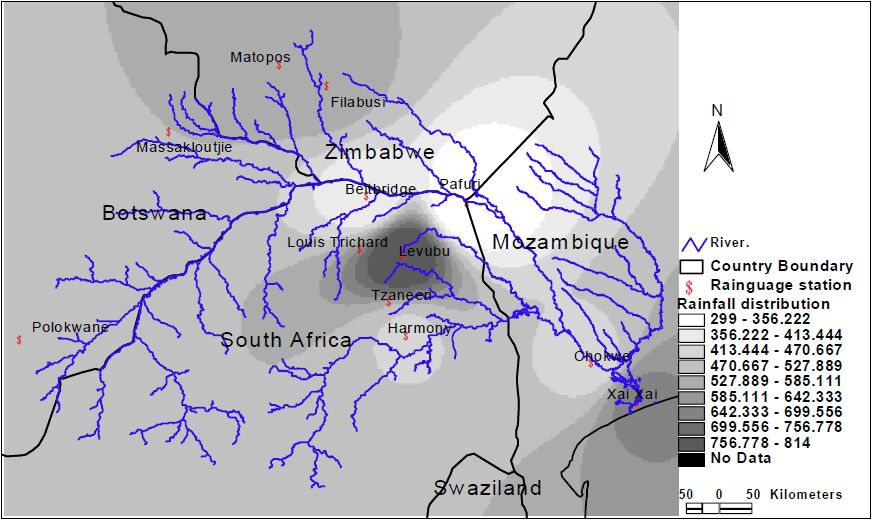
 DownLoad:
DownLoad: 